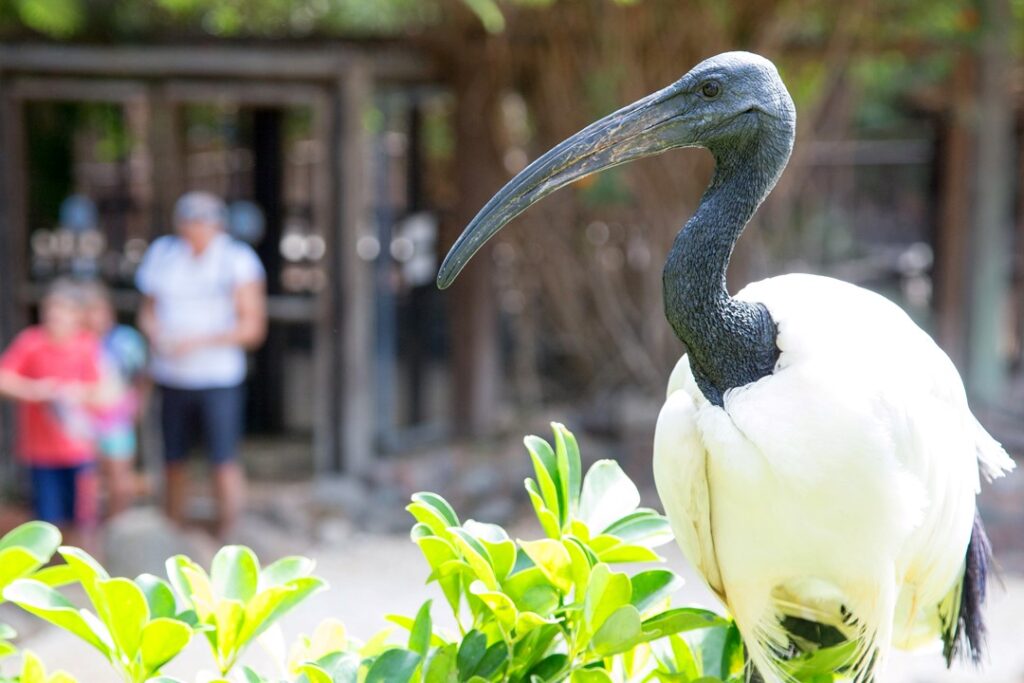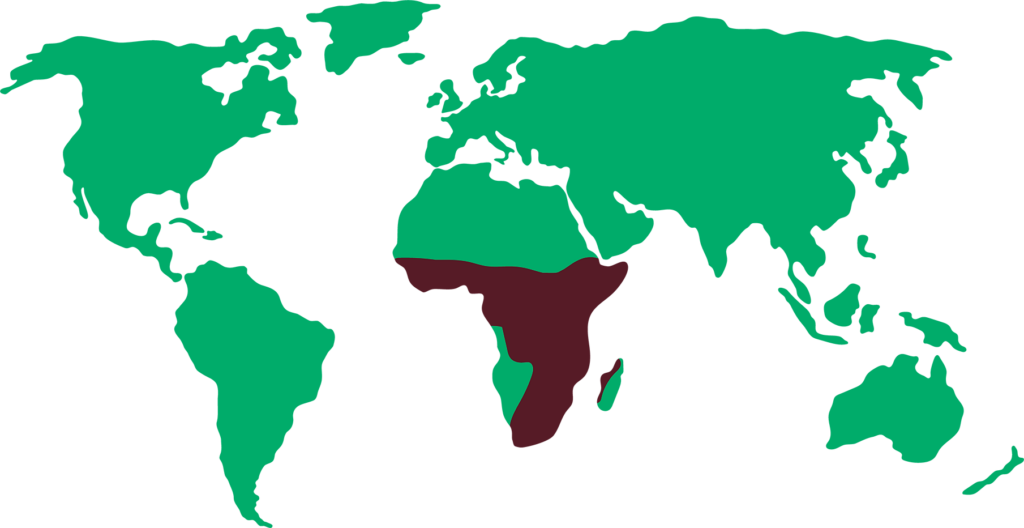SACRED IBIS
Threskiornis aethiopicus

LENGTH

89 cm
WEIGHT

1,5 kg
LIFESPAN

20 years
The sacred Ibis gets its name from its representation in Egyptian culture and religion. It considered as the personification of the Egyptian god Thoth, whose numerous attributes were always related to the arts and wisdom.
General characteristics
The sacred ibis can measure between 65-89cm, with an average weight of 1.5kg. When they spread their wings, the wingspan is between 112-125cm.
The head and neck are completely devoid of feathers, showing the black skin. The legs, also black, are long and slender with three toes. The rest of the body is covered with white feathers except on the back, so that a black border can be seen on the ends of the wings when they fly. During the breeding season, the plumage of the wing tips may turn yellowish and the legs gains a shade of red or copper.
The beak is long and curved downwards, allowing it to extract the food it needs from the mud. At first glance, its eyes may appear black, but they are actually brown with a dark red orbital ring.
It is very easy to recognize a young sacred ibis: its neck is not completely black, but covered by a thin layer of white feathers.
Feeding
They are predatory birds that feed mainly on insects, crustaceans, molluscs, frogs, reptiles and other small invertebrates and mammals. They may also eat seeds and algae and sometimes even carrion.
Behaviour
Sacred ibis are diurnal and form large flocks in search of food or to sleep at night. They frequently join other birds such as marabous, herons, storks and cranes.
They have migratory habits during the breeding season when they travel hundreds of kilometers to reproduce.
Reproduction
They usually breed once a year in the rainy season. The female lays between 2 and 3 eggs, which are pale blue with red spots and can have a length of 7cm.
Incubation is carried out by both parents and lasts approximately 25 days. The parents take turns so that one stays in the nest to take care of the newborn and the other one goes out in search of food.
They can build nests, which are composed of branches, in any place: trees, bushes, rocks or even on the ground.
Threats
It is classified as a species of minor concern due to the extent of its distribution.
Distribución
This species has its origin in Sub-Saharan Africa and is distributed throughout most of the African continent and the island of Madagascar. During the 18th century they were introduced in other continents and now they can also be found in the wild in some countries of Europe and North America.
Due to their great adaptability, their habitat can be very varied. They usually frequent places near the water.

Did you know?
Although it´s considered as a sacred animal in Egypt, there are no specimens left in this region.
They were mummified to be preserved in the graves.
They tend to nest in large colonies.
Conservation status
